This Pain au Romarin, or Sourdough Rosemary Bread, is made with an overnight levain, and benefits from a cold ferment in the refrigerator for added texture and flavor.
This aromatic and delicious bread is the bread of the month (or BOM) for the Artisan Bread Bakers.
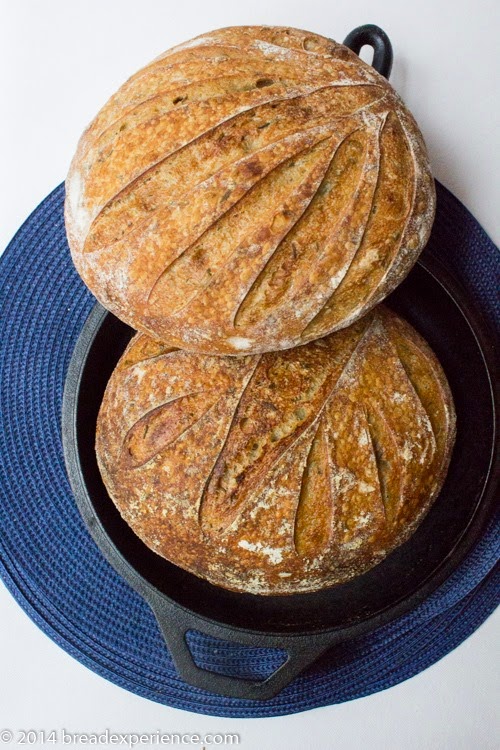
For the love of Rosemary
A search of Romarin returns some interesting results on Google.
You can hunt for international trademarks on the Romarin database or perhaps you might like camping at Le Romarin in Argeles near the Spanish border. I would love to visit the Spanish border, but I’ll have to save that for a different post.
This one focuses on another translation for Romarin – Rosemary.

If you enjoy the beautiful, fragrant and delicious herb from the Mediterranean, I invite you to make this bread and bask in the heavenly scent drifting through the air. You’ll thank me later.
These loaves include 28 grams of chopped rosemary. While I was mixing the dough, I kept thinking “wow” that’s a lot of rosemary, but once you mix it in, it makes a delicious dough. It’s not overpowering at all.
I’m happy to say that I was able to enjoy this wonderful essence from the bush growing outside my front door.
I had a beautiful rosemary plant growing in the same bed, but it bit the dust during the unseasonably cold winter we had earlier this year.
I had to let that bush go, but I got a new plant, and I’m delighted to see the new bush growing so well. I look forward to all of the breads and other dishes I’ll be making with this delightful herb.
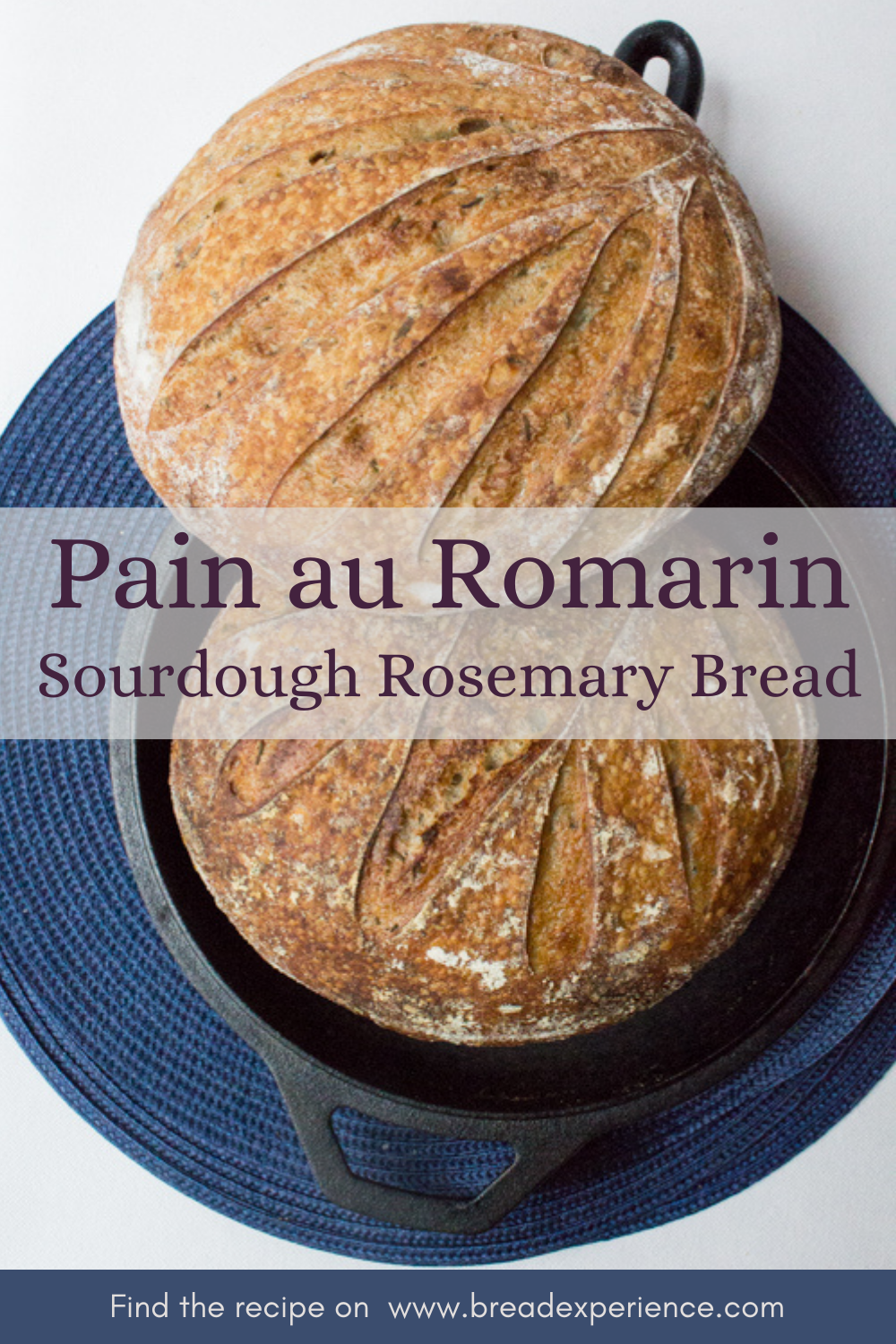
Video on shaping wet dough
This bread is made with a wet dough. If you need assistance learning how to shape wet dough, you might enjoy this video on shaping a Tartine – Chad Robertson’s method for shaping wet dough. http://youtu.be/cIIjV6s-0cA The shaping starts at the 3:09 minute mark.
Pain au Romarin – Sourdough Rosemary Bread
Makes: 2 large loaves
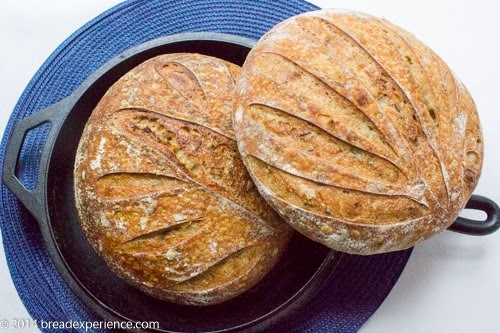
This is another classic adaption of a Richard Miscovich bread brought to you by David of Hearthbakedtunes.com, one of the admins of the Artisan Bread Bakers FB group. David increased the hydration to 75% and retained the whole wheat flour. And all of the flavor if I might add.
Levain:
- 227g organic all-purpose flour
- 227g water
- 45g Sourdough Starter
Final Dough:
- 454g water, warm
- 454g levain
- 457g organic all-purpose flour
- 228g home-milled whole wheat flour
- 14g Kosher salt
- 28g finely chopped fresh rosemary
Make the Levain:
The evening before you plan to bake the loaves, combine the levain ingredients in a large bowl, cover with plastic wrap, and allow it to ferment at 75 degrees for 8 hours, or longer if it ferments at a lower temperature. Mine fermented for 12 hours at about 65 degrees.
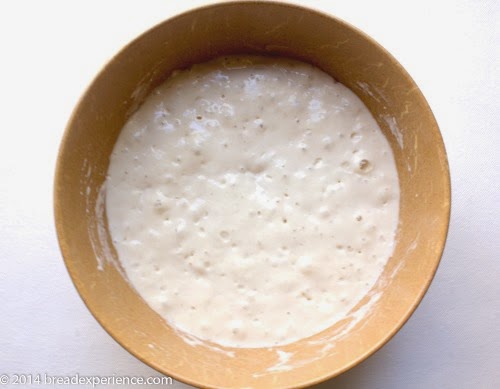
Autolyse:
Mix some of the warm water with the levain to break it up. Combine the rest of the ingredients, except the salt and rosemary, using a Danish dough whisk or wooden spoon or your hands. Mix thoroughly until the flours are completely hydrated.
When the dough becomes a sticky, shaggy mass, cover the bowl with plastic wrap and let the dough autolyse (rest) for thirty minutes at room temperature.
Mixing:
After the autolyse, sprinkle the salt and rosemary over the top of the dough and work them in using your fingers. Hand knead the dough for 6-10 minutes by doing a series of fold-and-turns in the bowl. Refer to my Tartine post to see photos of the fold-and-turn method.
Resist the urge to add any additional flour, it is supposed to be a wet dough. You can do the folds on the counter, but I do them in the bowl so that you don’t have to add any extra flour.
Bulk Ferment & Folding:
Ferment the dough at room temperature (75 degrees) for 2.5 hours with four folds in 30-minute intervals.
Final Shaping & retarding in refrigerator overnight:
This bread can be proofed for two hours at room temperature in linen-lined baskets, or in the refrigerator for 12-15 hours.
After the bulk ferment and folds, my dough was fairly easy to work with. So I shaped it into round boules and let them rest for 20 minutes on the counter sprinkled with a little flour.
Then I shaped them into tight rounds and placed them seam-side up in lined banneton baskets sprinkled with a mixture of all-purpose/rice flour. Then I placed them in the refrigerator overnight.
Note: If you do proof in the fridge, heavily flour your linen, rice flour will help to keep the dough from sticking to the basket. If desired, you can brush the remaining (extra) flour of the bread before baking with a pastry brush. I didn’t need to brush any excess flour off. Most of it had been absorbed in the dough.
Scoring & Baking the Loaves:
After the final proof, (the next day if you let them proof in the refrigerator overnight).
Preheat the oven to 450 degrees F. for at least 30 minutes with a Dutch oven or Dutch oven combo baker on the bottom rack. I used a Dutch oven combo baker to bake both of the loaves.
Remove one loaf from the refrigerator and carefully flip it over onto the bottom of the combo baker (or Dutch oven). Score the loaf in the pattern of your choice. If you are using a Dutch oven, this will be tricky so be careful not to burn yourself.
Bake the loaf at 450 degrees for 20 minutes with the lid on. Remove the lid and finish baking the bread for an additional 20-30 minutes.
Remove the loaf to a wire rack to cool completely before slicing and serving.
Repeat the process with the other loaf. Let the oven and the Dutch oven warm back up to 450 degrees, then take the other loaf out of the refrigerator and score and bake it.
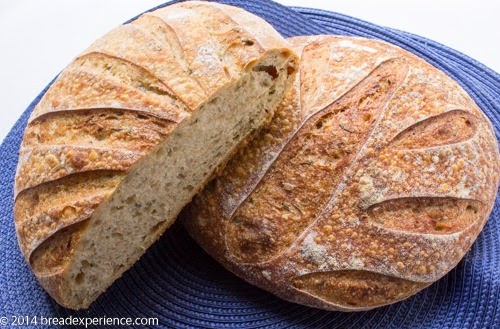
These Pain de Romarin loaves have been submitted to BYOB hosted by Carola of SweetandThatsIt
Enjoy the smell of rosemary while you are working. Trust me, you will be rewarded for your efforts. This sourdough rosemary bread is so good. I ate some with butter and some with olive oil. Fabulous!
Happy Baking!
Cathy
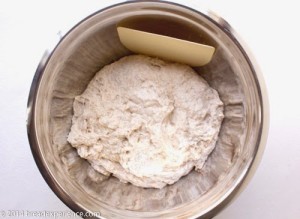
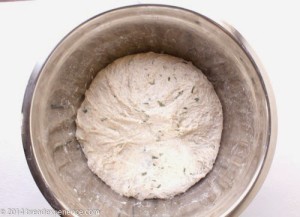
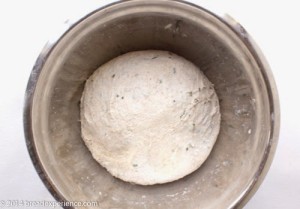
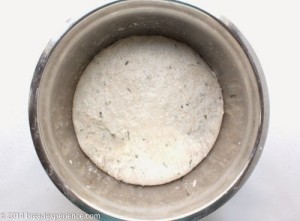
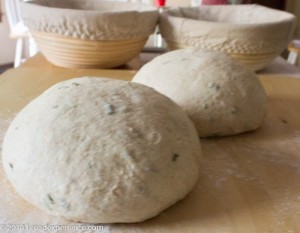
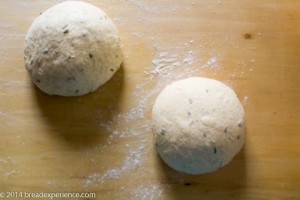
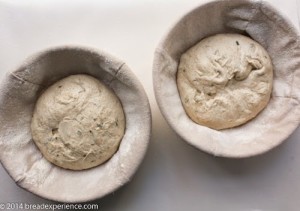
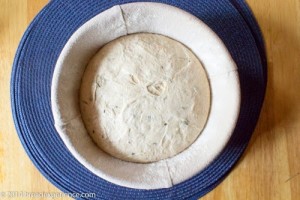
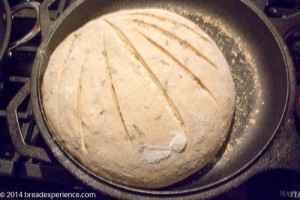
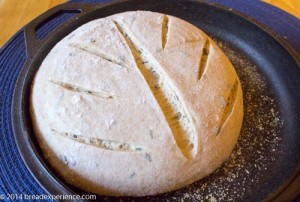
Karen Kerr says
Amazing post Cathy! I love your slashing pattern too. =)
Cathy W. says
Thanks Karen! This was an awesome bread to make and eat.